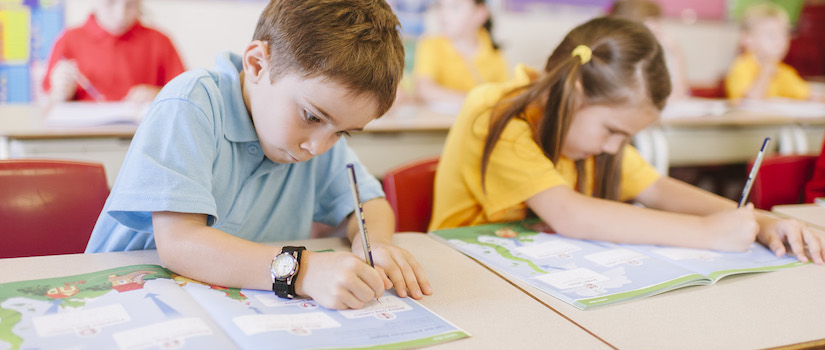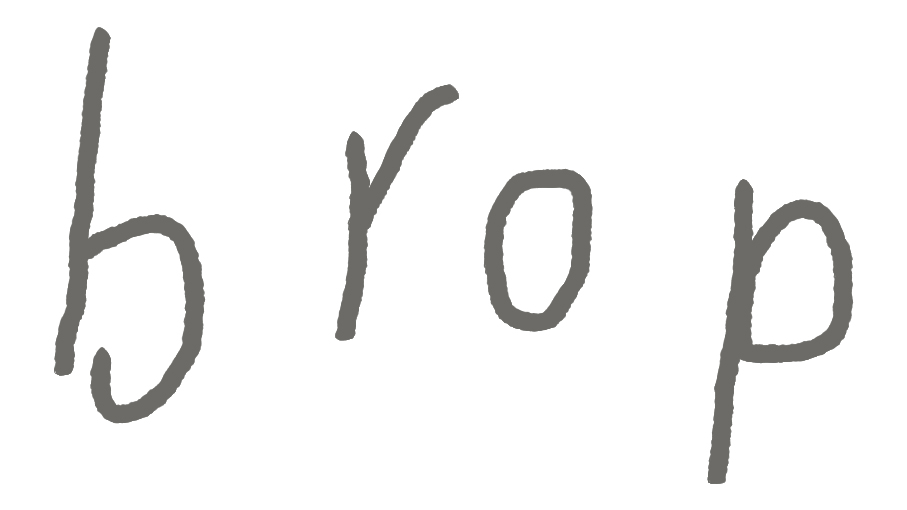Articles & Videos
Letter reversals in handwriting
Categories
Subscribe to our newsletters
Receive teaching resources and tips, exclusive special offers, useful product information and more!
Letter reversals in handwriting
Writing Time 20/1/24

If you’ve ever taught in early primary, chances are you’ve seen letter reversals in a student’s handwriting. While the idea of writing reversed letters may seem unnatural to someone with years of handwriting experience (like yourself), almost all children around the age of five go through a stage where they are likely to spontaneously write letters that face the wrong way.1
Find out what constitutes a letter reversal, why students do it and how dedicated practice can help combat this typical trait in early handwriting development.
What is a letter reversal?
A letter reversal is when the left–right orientation of a given letter is reversed. Letter reversals are sometimes referred to as ‘mirror writing’ because letters look correct when they are viewed in a mirror. For example, d becomes b in the word drop.

Letter reversals are sometimes mistaken for letter transposition, which involves swapping the order of letters in a word. For example, attempting to spell the word bird but incorrectly writing brid.
Why do students do it?
There’s a wealth of research (and several myths*) as to why students reverse letters when conducting handwriting. The most interesting and up-to-date theory is the mirror generalisation process.2 It suggests that our visual system has evolved in a way that allows us to rapidly and accurately identify threats from any angle. Through this process, we are able to identify a bear as a bear regardless of its orientation.

When writing, the natural inclination to disregard left–right orientation of objects impedes our ability to use correct letter orientation. When students are learning to write, they might know the letter but forget its orientation, so they’ll resort to the orientation they’ve observed most – which for Latin letters is usually right-facing.3
*Myth buster: Claims that letter reversal is a result of left-handedness or that it’s more common in boys than girls are generally unsupported by research. Many studies have proven that handedness has no effect on letter reversals and that it’s equally common in girls and boys.2
How can handwriting practice help?†
To help overcome letter reversals, it’s important to conduct frequent handwriting practice that includes explicit instruction on letter formation and direction.
Explicit teaching of letter formation reinforces correct letter direction and can be conducted in a number of ways. Project interactive tools – like the See & Trace tool from Writing Time Online – to focus whole-class attention and model correct formation. You may also use the tool to practise letter direction by having students use big sweeping motions as they trace large letters on pieces of butchers paper.
If students are struggling, take advantage of the free worksheets from Writing Time Online for targeted letter practice. If a student is writing b for d, have them practise the letter b in isolation, then practise the letter d in isolation. Next, have them copy a sentence that combines both tricky letters – for example: The dog is brown.
†Note: While letter reversals are typical in the early stages of handwriting development, if a student has letter-formation problems that persist beyond the early years of primary education despite explicit handwriting instruction and ongoing guided practice, they may require more intensive intervention.
References
- Fischer, J-P & Tazouti, Y 2012, ‘Unraveling the mystery of mirror writing in typically developing children’, Journal of Educational Psychology, 104(1), 193–205.↩
- Fischer, J-P & Luxembourger, C 2018, ‘A synoptic and theoretical account of character (digits and capital letters) reversal in writings by typically developing children’, Education Sciences, 8(137), doi:10.3390/educsci8030137.↩
- McIntosh, RD, Anderson, EL & Henderson, RM 2018, ‘Experimental confirmation of a character-facing bias in literacy development’, Journal of Experimental Child Psychology, 170, 207–214.↩